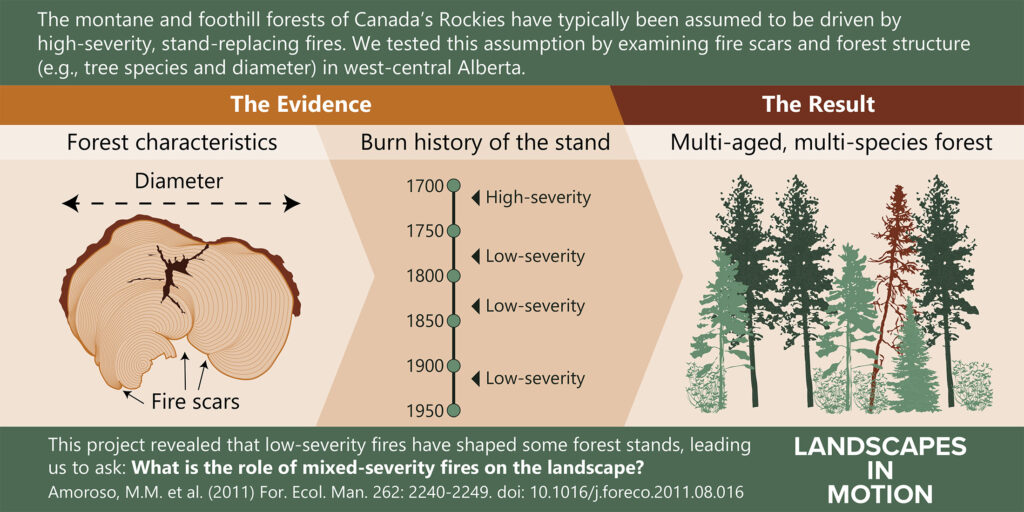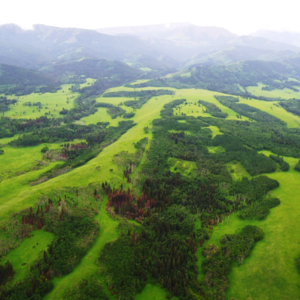This blog post and infographic summarize the work contained in the following paper:
Amoroso, M.M., L.D. Daniels, M. Bataineh, and D.W. Andison. 2011. Evidence of mixed-severity fires in the foothills of the Rocky Mountains in west-central Alberta, Canada. Forest Ecology and Management 262: 2240-2249. Available online here.
The prevailing assumption has typically been that montane and foothill forests of Canada’s Rocky Mountains have been dominated by high-severity fires that kill almost all trees. But is that really the case?
With this question in mind, researchers studied forest structure and fire scars in forests near Hinton, Alberta to detect fires that were not intense enough to be visible on aerial photographs. They found trees with multiple fire scars from years when they burned yet survived, providing evidence that low- and moderate-intensity fires have occurred in some of these stands. They also found trees that were established decades after the last high-severity, stand-replacing fire.
In some forest stands in this region, it appears that low- and moderate-intensity fires opened small gaps in the canopy, allowing other tree species (e.g., spruce and subalpine fir) to grow in the understory. Subsequent mild burns continued to add complexity: instead of a single-aged, single-species forest, layers of vegetation and different tree species coexist in these stands.
Many of the details of how, when, and under what conditions lower severity fires occur are still missing. These are some of the questions that Landscapes in Motion will try to answer by expanding the scale of research and adopting a multi-disciplinary approach.











